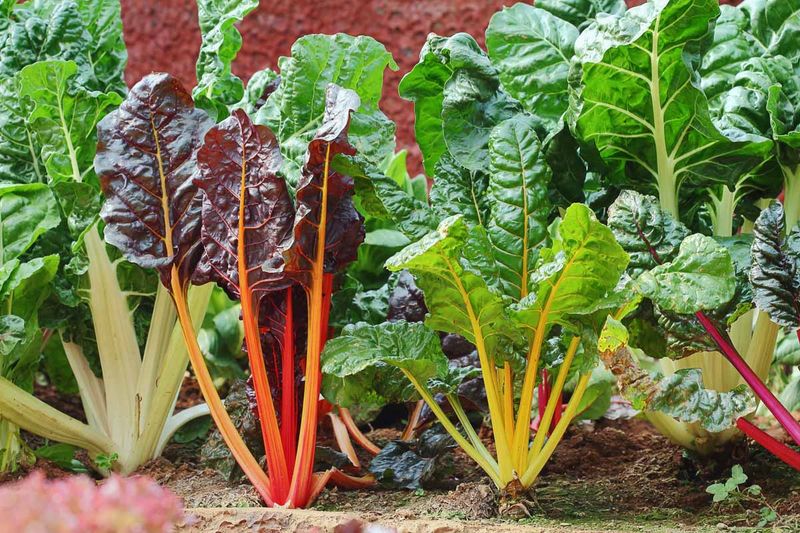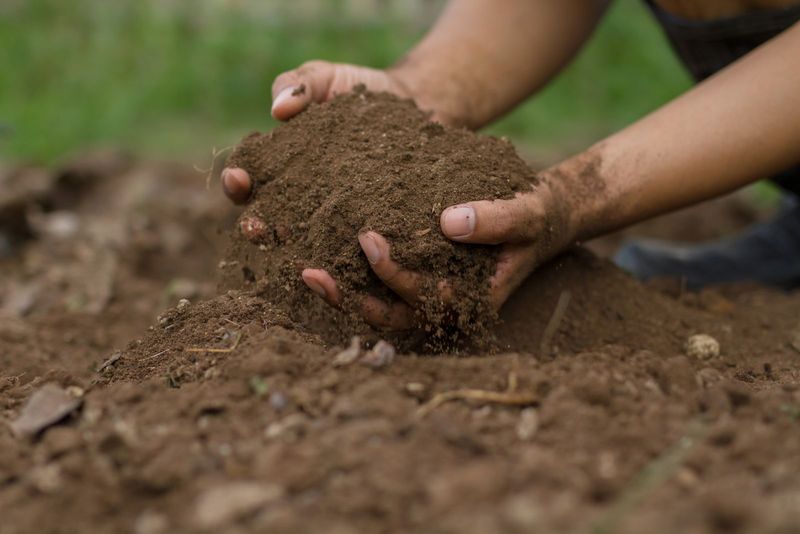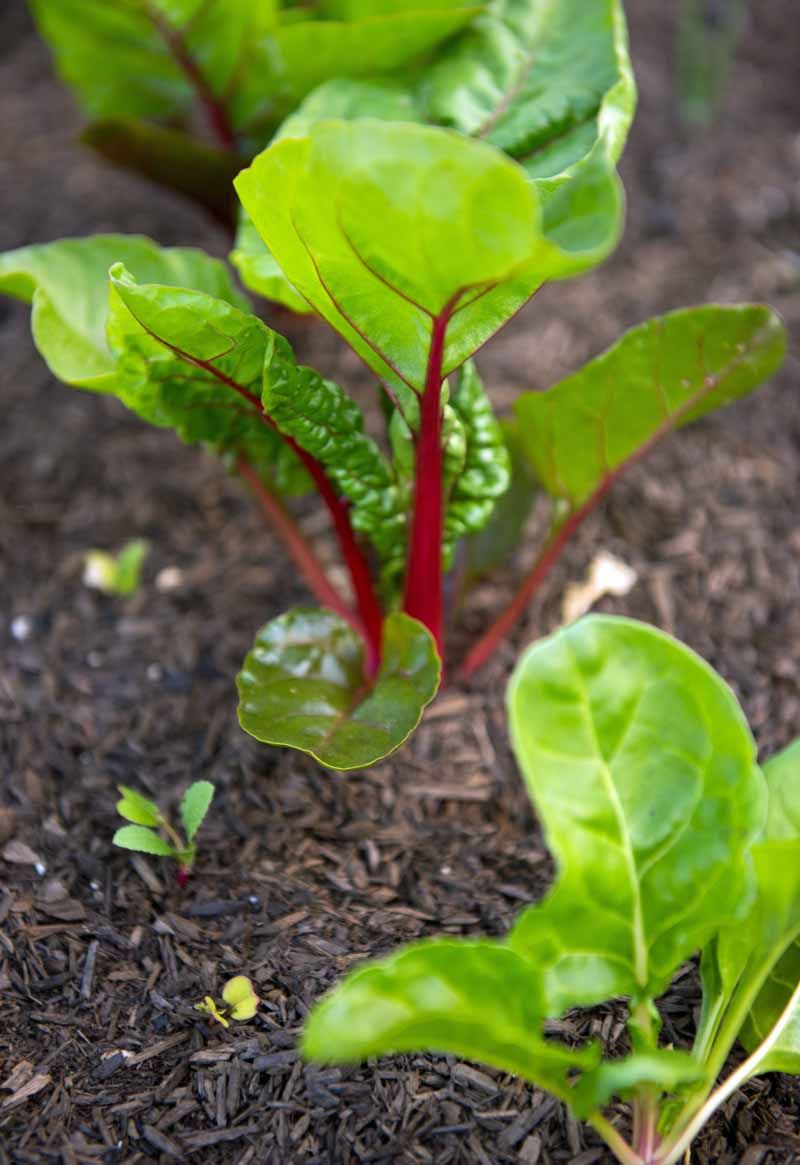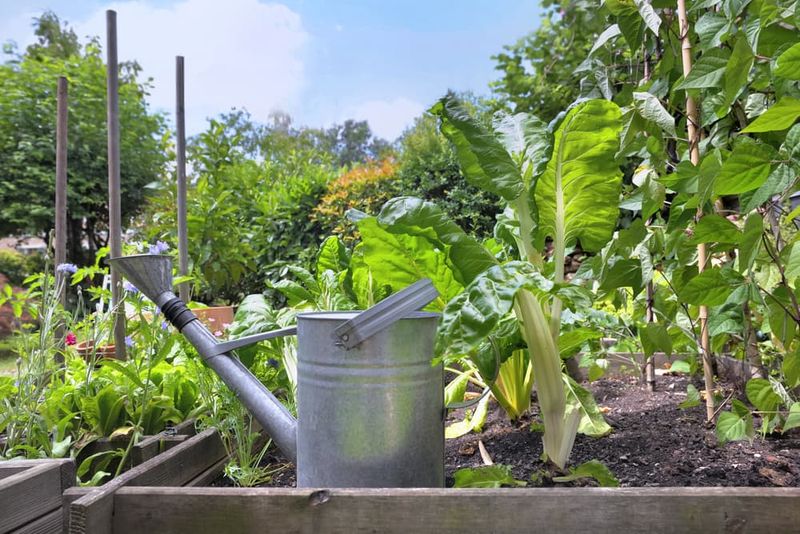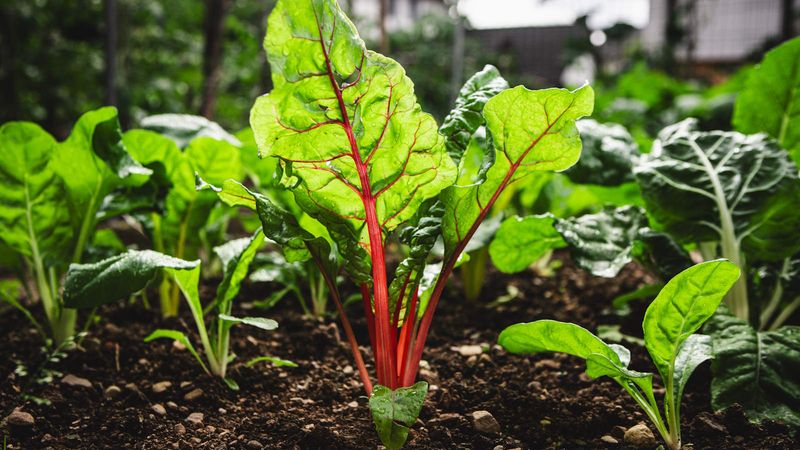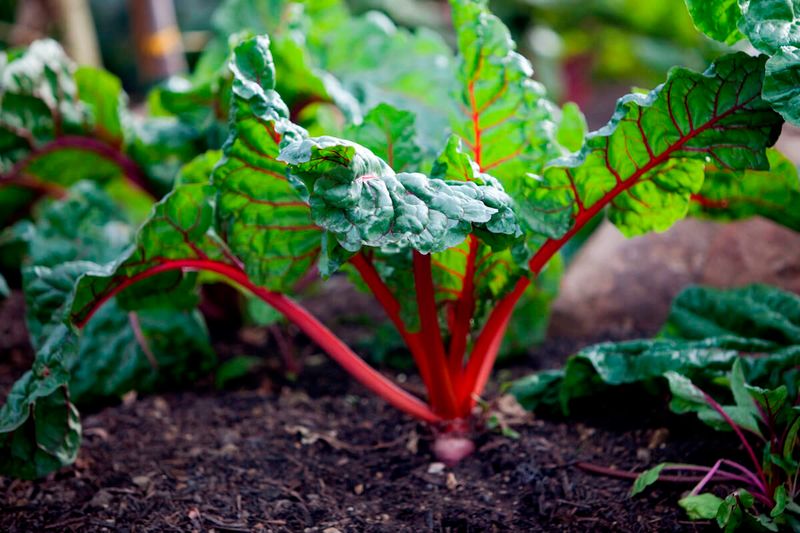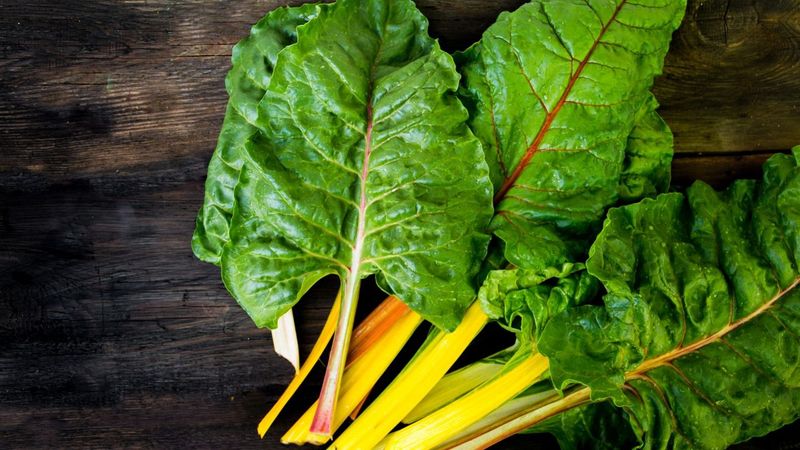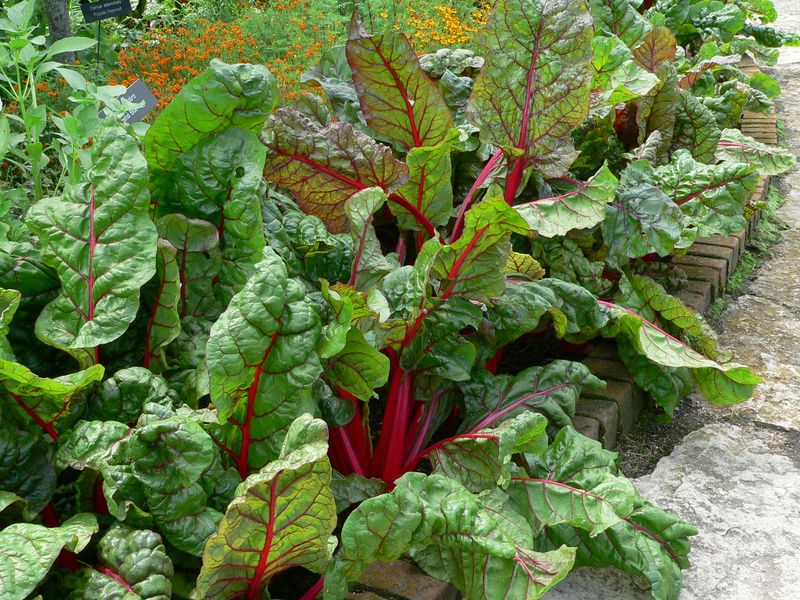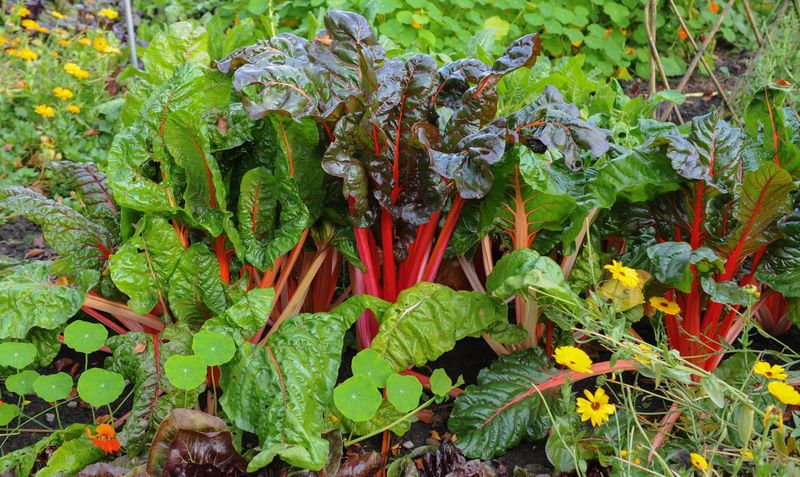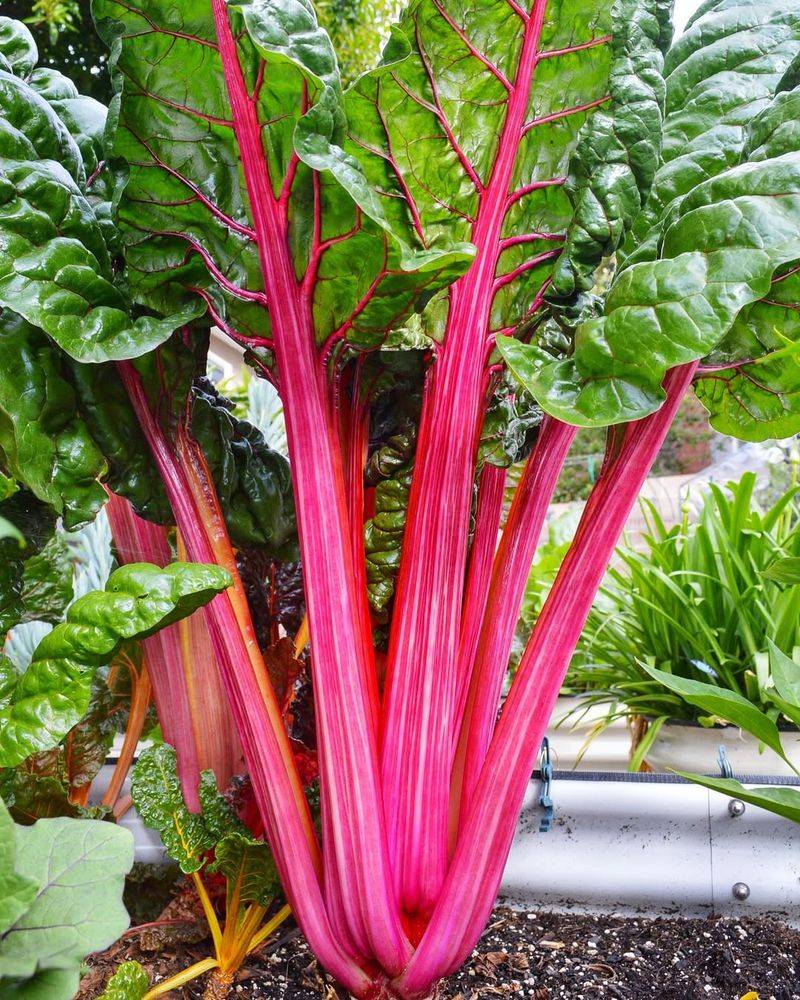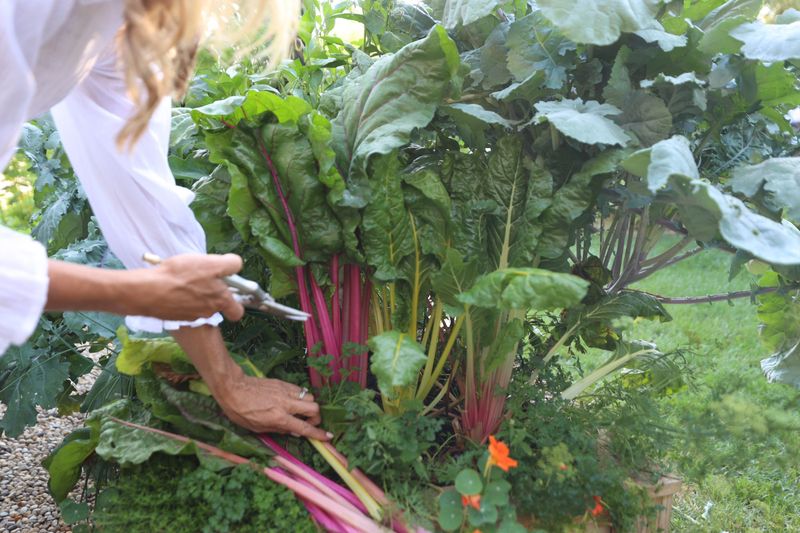Growing Swiss chard has become one of my favorite garden joys—it’s colorful and surprisingly easy to grow once you get the hang of it. But as with most things in the garden, a little extra know-how can take your harvest from “meh” to amazing.
Over time, I’ve picked up a few tricks that have made a big difference in how well my Swiss chard grows. So, whether you’re brand new to gardening or have dirt under your nails year-round, these tips will help you grow chard that’s healthy, productive, and honestly, kind of impressive.
From how to plant it right to the best way to pick it, these are the insights I wish I had when I first started.
1. Choose The Right Variety
Selecting the right variety of Swiss chard can significantly impact your harvest. Different types offer varying levels of cold tolerance, color, and growth rate.
For instance, ‘Bright Lights’ is known for its stalks and moderate growth pace. Always consider your local climate and soil conditions when choosing the variety to plant.
Choose varieties that are well-suited to your region to ensure a robust harvest. Experimenting with a few different types can also offer a delightful mix of colors and flavors, enhancing your garden’s appeal and productivity.
2. Optimize Soil Conditions
Healthy soil is the foundation of a bountiful Swiss chard harvest. Ensure your soil is rich in organic matter and well-drained. Adding compost or aged manure can greatly enhance soil fertility.
Test the pH levels to maintain a slightly acidic to neutral range, ideally between 6.0 and 7.0. This balance allows chard to absorb nutrients effectively. Regularly mulching the soil can help retain moisture and suppress weeds.
By optimizing your soil conditions, you’ll provide your Swiss chard with the nutrients they need to thrive and produce abundantly.
3. Space Your Plants Adequately
Proper spacing is crucial for the healthy growth of Swiss chard. Crowded plants compete for water, nutrients, and sunlight, leading to stunted growth.
Space your Swiss chard seedlings at least 12 inches apart. This distance allows ample room for each plant to develop its foliage fully. Additionally, ensuring good air circulation reduces the risk of fungal diseases.
If you’re working with limited space, consider using staggered rows to maximize your garden’s efficiency. Adequate spacing is a simple yet effective way to boost your chard’s productivity.
4. Implement Crop Rotation
Crop rotation is a beneficial practice that helps maintain soil health and prevent pest buildup. Avoid planting Swiss chard in the same spot year after year. Instead, rotate them with other non-related crops like beans or tomatoes.
This practice disrupts pest life cycles and reduces the risk of soil-borne diseases. Keeping a garden journal can help track these rotations, ensuring a well-planned garden.
By implementing crop rotation, you’ll create a sustainable environment that fosters healthy Swiss chard plants and maximizes their yield.
5. Water Consistently
Consistent watering is key to Swiss chard growth. These plants prefer a steady supply of moisture but can suffer from waterlogged roots. Water your plants early in the morning to reduce evaporation.
Ensure the soil remains consistently moist, particularly during dry spells. Drip irrigation systems or soaker hoses can be excellent investments for maintaining this balance.
Avoid overwatering, as it can lead to root diseases and hinder plant development. Consistent watering, adjusted for weather conditions, helps in producing healthy and abundant chard leaves.
6. Use Mulch Wisely
Mulching is a simple yet powerful technique to enhance Swiss chard growth. Applying organic mulch like straw or wood chips around your plants helps retain soil moisture and suppress weeds.
It also adds organic matter to the soil as it breaks down. Spread a two to three-inch layer around
your chard, making sure not to smother the stems.
This practice not only conserves water but also moderates soil temperature, creating an optimal growing environment. Using mulch effectively can make a significant difference in your Swiss chard’s productivity.
7. Fertilize Regularly
Regular fertilization can boost the vigor and yield of your Swiss chard plants. Choose a balanced, organic fertilizer to provide essential nutrients. Apply it once every four to six weeks during the growing season.
Pay attention to the nitrogen levels, as they promote leafy growth. However, avoid over-fertilizing, which can lead to excessive leaf production at the expense of flavor.
Monitoring your plants’ response to feeding will guide your fertilization schedule. By keeping your chard well-fed, you’ll encourage robust plants that deliver a plentiful harvest.
8. Protect From Pests
Keeping pests at bay is vital to maximizing your Swiss chard harvest. Common pests include aphids, leaf miners, and slugs. Regularly inspect your plants for signs of infestation.
Employ organic methods such as neem oil or insecticidal soap to combat pest issues. Handpicking larger pests can also be effective. Encouraging beneficial insects like ladybugs can help control pest populations naturally.
By maintaining a vigilant approach to pest management, you can ensure your plants remain healthy and continue to produce an abundant harvest.
9. Harvest At The Right Time
Harvesting Swiss chard at the right time is crucial for maximizing its nutritional value and taste. Begin harvesting when the leaves are about 6-8 inches long.
Use a sharp knife or scissors to cut the outer leaves, allowing the inner leaves to continue growing. This method supports continuous production throughout the season.
Avoid letting the leaves grow too large, as they can become tough and bitter. You’ll enjoy tender, tasty greens and encourage new growth, keeping your Swiss chard productive.
10. Watch For Bolting
Bolting is a natural process where plants prematurely produce flowers and seeds, often due to stress. Swiss chard is less prone to bolting than other greens, but it can happen during hot weather.
Watch for signs like elongated stalks or flower buds. If bolting begins, cut off the flower stalks immediately to redirect energy back to leaf production. Planting bolt-resistant varieties and providing shade during peak heat can also help.
You can extend your Swiss chard’s productive season and enjoy fresh greens longer.
11. Succession Planting
Succession planting is a savvy way to ensure a steady supply of Swiss chard throughout the growing season. Plant new seeds every few weeks as older plants mature.
This practice allows you to harvest fresh leaves continuously, without gaps in production. Plan your planting schedule in advance to align with seasonal changes and garden space availability.
You’ll always have chard ready for harvest, maximizing your garden’s productivity and providing a constant supply of nutritious greens.
12. Encourage Beneficial Insects
Inviting beneficial insects into your garden can enhance Swiss chard growth by naturally managing pest populations. Planting companion flowers like marigolds, daisies, or alyssum attracts ladybugs, bees, and other helpful insects.
These garden allies help control harmful pests, reducing the need for chemical interventions. Creating a diverse garden ecosystem supports healthy plant growth and biodiversity.
By fostering an environment rich in beneficial insects, you’ll promote a thriving Swiss chard crop, increasing your harvest with nature’s help.
13. Shade During Extreme Heat
Providing shade during extreme heat can protect Swiss chard from stress and bolting. Use shade cloth or lightweight row covers to shield your plants during peak sun hours.
This protection helps maintain soil moisture and prevents leaf wilting. Adequate airflow and hydration are crucial during these times, so ensure your setup allows for proper ventilation.
By managing exposure to extreme temperatures, you safeguard your Swiss chard against heat damage, prolonging its growth cycle and boosting your overall harvest.
14. Prune Regularly
Regular pruning is essential to maintain healthy Swiss chard plants. Remove yellowing or damaged leaves to promote airflow and prevent disease.
Pruning also encourages new growth by redirecting the plant’s energy. Use clean, sharp tools to avoid spreading any potential infections. Focus on cutting the oldest leaves first, making room for younger leaves to thrive.
Regularly assessing your plants and trimming as needed keeps them vigorous and productive. Proper pruning practices can greatly enhance your Swiss chard’s yield, ensuring a robust harvest.
15. Keep A Gardening Journal
Keeping a gardening journal is an invaluable tool for improving your Swiss chard harvests. Document your planting dates, varieties, and any pest issues you encounter.
Note weather patterns and how they affect growth. Recording successes and challenges provides insights into what works best in your garden. This personalized reference helps refine your gardening strategies year after year.
You can make informed decisions that enhance your Swiss chard’s productivity and enjoy a more successful gardening experience.


